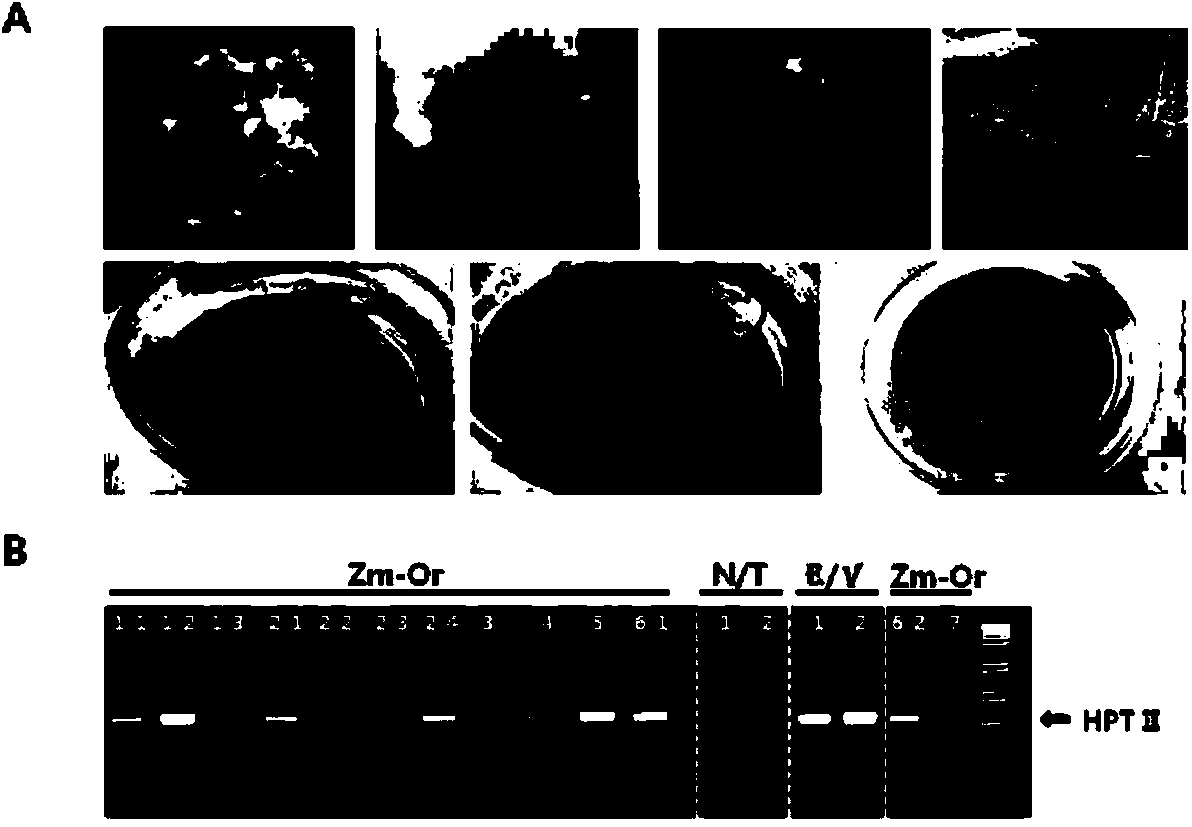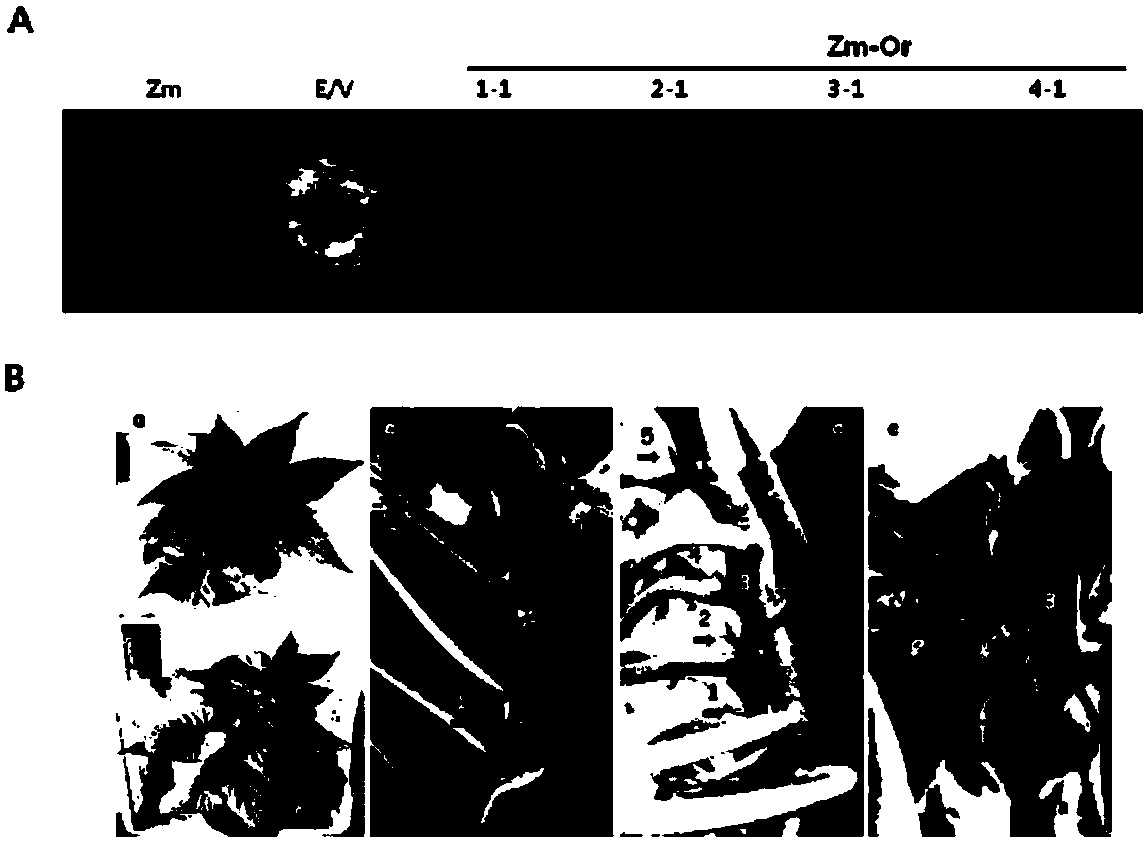Method for obtaining a transformed ipomoea batatas plant body including highly accumulated carotenoid and anthocyanin, and plant body obtained by same
A technology of carotene and phytosomes, which is applied to the preparation of transformed sweet potato phytosomes that accumulate a large amount of carotenoids and anthocyanins and the field of phytosomes prepared therefrom, which can solve the problems of inability to meet the requirements of commercialization and low productivity , to achieve the effect of high use value and enlarged harvest
- Summary
- Abstract
- Description
- Claims
- Application Information
AI Technical Summary
Problems solved by technology
Method used
Image
Examples
preparation example Construction
[0042] Moreover, the present invention provides a method for preparing transformed sweet potato plants that accumulate a large amount of anthocyanins with increased tolerance to environmental stress compared to the wild type, which includes adding IbOr-Ins containing the base sequence of SEQ ID NO.1 The recombinant vector of the gene mutant is transformed into the sweet potato plant that accumulates anthocyanin, thereby making the step of overexpressing the IbOr-Ins gene mutant, and the IbOr-Ins gene mutant is artificially inserted into the IbOrange gene derived from sweet potato derived from a specific base sequence.
[0043] According to the method of an embodiment of the present invention, the sweet potato plant body accumulating anthocyanins is preferably purple sweet potato, more preferably sweet potato of Xinzimei variety, but not limited thereto.
[0044] According to the method of an embodiment of the present invention, the aforementioned environmental stress is prefer...
Embodiment 1
[0049] Cloning and base sequence analysis of embodiment 1.IbOr-Ins gene
[0050] PCR primers for cloning sweet potato Orange gene were prepared. The primer sequences are as follows: forward primer (5'-atggtatattcaggtagaatcttgtcgctc-3'; SEQ ID No.2) and reverse primer (5'-ttaatcaaatgggtcaattcgtgggtcatg-3'; SEQ ID No.3). Using the thus obtained IbOr as a template, overlapping PCR was performed to artificially mutate the specific base sequence of IbOr. In order to insert the nucleotide sequence deduced to be -KSQNPNL- from the 133rd amino acid in the amino acid sequence of the IbOrange gene (see Korean Patent No. 0990330), PCR primers were prepared, and the primer sequences used at this time were as follows: Forward Primer (5'-gaaaagcaagaaaataaacttaa atcccagaaccctaac-3'; SEQ ID No. 4) and reverse primer (5'-aagatttgcggatgtcaggtt agggttctgggattaag-3'; SEQ ID No. 5). As a result, a PCR product of about 921 bp was obtained, cloned into the pGEM-T-vector, and sequenced to confirm t...
Embodiment 2
[0052] Embodiment 2. Transformation is derived from the IbOr-Ins gene variant of sweet potato in new Zimei sweet potato somatic cell culture cell
[0053] Under the regulation of the 35S promoter, the IbOr-Ins gene mutant derived from sweet potato was transformed into a large number of anthocyanin-containing sweet potato cultivar Xinzimei somatic cell culture cells ( figure 2 A). As a result, transformed plantlets were obtained from the selection medium, and using this as an object, the expression of the transformant selection marker hygromycin gene HPT II was measured by genomic DNA PCR to select transformants. The above transformants were labeled Zm-Or ( figure 2 B).
PUM
| Property | Measurement | Unit |
|---|---|---|
| diameter | aaaaa | aaaaa |
Abstract
Description
Claims
Application Information
 Login to View More
Login to View More - R&D
- Intellectual Property
- Life Sciences
- Materials
- Tech Scout
- Unparalleled Data Quality
- Higher Quality Content
- 60% Fewer Hallucinations
Browse by: Latest US Patents, China's latest patents, Technical Efficacy Thesaurus, Application Domain, Technology Topic, Popular Technical Reports.
© 2025 PatSnap. All rights reserved.Legal|Privacy policy|Modern Slavery Act Transparency Statement|Sitemap|About US| Contact US: help@patsnap.com



